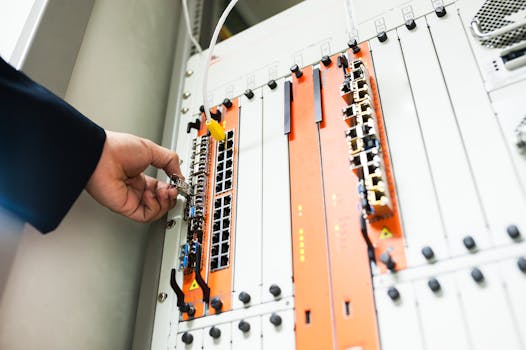
Fiber Optics in Africa: Innovations Driving Economic Growth
Fiber Optics in Africa: Innovations Driving Economic Growth is transforming the continent’s telecommunications landscape and driving economic growth. The increasing demand for high-speed internet and reliable connectivity has led to a significant investment in fiber optic infrastructure across Africa.
The use of fiber optics in Africa has improved internet connectivity, enabling businesses to operate more efficiently and effectively. With faster data transfer rates, companies can now communicate with clients and partners worldwide, facilitating international trade and commerce.
History of Fiber Optics in Africa
The history of fiber optics in Africa dates back to the 1990s, when the first fiber optic cables were laid in South Africa. Since then, the technology has spread rapidly across the continent, with many countries investing heavily in fiber optic infrastructure.
Today, fiber optics play a critical role in Africa’s telecommunications sector, providing high-speed internet connectivity to businesses, homes, and individuals. The technology has also enabled the growth of e-commerce, online education, and telemedicine, among other services.
Innovations Driving Economic Growth
Several innovations are driving the adoption of fiber optics in Africa, including the use of fiber-to-the-home (FTTH) technology, which provides high-speed internet connectivity directly to homes and businesses.
Another innovation is the deployment of fiber optic cables in rural areas, which has expanded internet connectivity to previously underserved communities. This has enabled rural businesses to access global markets and has facilitated the growth of e-commerce in these areas.
Impact on Economic Growth
The impact of fiber optics on economic growth in Africa has been significant. A study by the African Development Bank found that every 10% increase in broadband penetration in Africa leads to a 1.3% increase in GDP growth.
The adoption of fiber optics has also created jobs and stimulated economic activity in various sectors, including telecommunications, IT, and e-commerce. Additionally, the technology has enabled the growth of small and medium-sized enterprises (SMEs), which are critical to Africa’s economic development.
Conclusion
In conclusion, the adoption of fiber optics in Africa is driving economic growth through improved telecommunications and internet connectivity. The innovations in fiber optic technology, such as FTTH and the deployment of fiber optic cables in rural areas, have expanded internet connectivity to previously underserved communities and have facilitated the growth of e-commerce and other online services.



